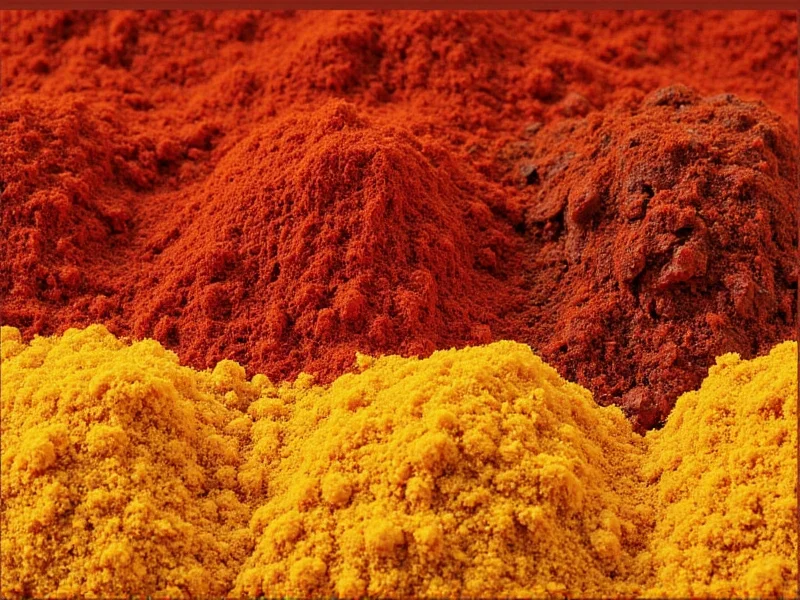Understanding what color is spice requires clarifying which 'spice' you're referring to, as this term spans multiple contexts with completely different color associations. Many people searching for 'what color is spice' are actually thinking of the iconic 1990s pop group rather than culinary ingredients, creating widespread confusion about this seemingly simple question.
Decoding the Spice Girls Color Connections
When most people ask what color is spice, they're typically referring to the Spice Girls and their famous color-coded nicknames. This British pop phenomenon adopted distinctive personas that became globally recognized:
- Baby Spice (Emma Bunton) - Primarily associated with soft yellow and pastel tones that reflected her innocent image
- Ginger Spice (Geri Halliwell) - Famous for fiery red outfits matching her vibrant red hair
- Scary Spice (Melanie Brown) - Known for bold black clothing and edgy style
- Sporty Spice (Melanie Chisholm) - Typically wore athletic blue outfits and sportswear
- Posh Spice (Victoria Beckham) - Famous for elegant pink and sophisticated fashion
This color-coding wasn't arbitrary—it helped fans instantly identify each member's personality and became integral to their brand identity during their peak popularity from 1994-2000.
Culinary Spices and Their Natural Colors
When discussing actual spices used in cooking, the question what color is spice has no single answer since each spice has its own distinctive hue. The color comes from natural compounds within the plant material:
| Spice | Primary Color | Natural Pigment | Color Variations |
|---|---|---|---|
| Turmeric | Vibrant yellow | Curcumin | Bright golden to deep orange-yellow |
| Paprika | Bright red | Carotenoids | From fiery red to deep burgundy |
| Cinnamon | Warm brown | Tannins | Light tan to dark reddish-brown |
| Saffron | Golden-orange | Crocin | Intense yellow-orange threads |
| Cardamom | Green to brown | Essential oils | Green pods or brown seeds |
These colors aren't just aesthetic—they often indicate the spice's chemical composition and potential health benefits. For example, the vibrant yellow in turmeric comes from curcumin, which has been studied for its anti-inflammatory properties.
Other Interpretations of 'Spice' and Color
While the Spice Girls and culinary spices represent the most common interpretations, other contexts exist when exploring what color is spice:
- Science terminology: In some scientific contexts, 'spice' might refer to specific compounds with characteristic colors
- Fictional references: Frank Herbert's Dune series features 'spice melange' which is described as having an orange color
- Brand names: Various products use 'spice' in their name with specific color schemes
Why the Confusion About Spice Colors Persists
The ongoing confusion about what color is spice stems from several factors:
- The Spice Girls' massive global popularity made 'spice' synonymous with their color-coded identities for an entire generation
- Search algorithms sometimes mix results between the pop group and culinary ingredients
- People often search using incomplete phrasing like 'what color is spice' without specifying context
- Educational gaps about both pop culture history and culinary knowledge
Understanding whether you're asking about spice girls color associations or the natural colors of culinary spices completely changes the answer to this question. This distinction matters for accurate information retrieval and prevents the spread of misinformation.
Practical Applications of Spice Color Knowledge
Knowing the actual colors of spices serves several practical purposes beyond answering trivia questions about what color is spice:
- Culinary accuracy: Properly identifying spices by color prevents cooking mistakes
- Quality assessment: Vibrant color often indicates freshness and potency in spices
- Food presentation: Understanding spice colors helps create visually appealing dishes
- Cultural context: Many traditional dishes rely on specific spice colors for authenticity
For the Spice Girls specifically, their color associations remain culturally significant in fashion, music history, and pop culture studies—making it valuable knowledge for understanding 1990s cultural phenomena.
What color is Baby Spice from the Spice Girls?
Baby Spice (Emma Bunton) was primarily associated with yellow and pastel colors that reflected her innocent, sweet persona. Her signature looks often featured soft yellow outfits, which became her visual trademark throughout the Spice Girls' peak popularity.
Which spice is naturally yellow in color?
Turmeric is the most vibrant naturally yellow spice, containing curcumin which gives it its distinctive golden-yellow color. Saffron also produces a yellow-orange hue, though it appears as red threads that release yellow pigment when used in cooking.
Why did the Spice Girls use color nicknames?
The Spice Girls adopted color-coded nicknames as part of their marketing strategy to create distinct, memorable personas. This helped fans easily identify each member's personality traits and made the group more marketable through merchandise, media appearances, and branding that leveraged these visual distinctions.
Does the color of a spice indicate its quality?
Yes, the color of a spice often indicates its freshness and potency. Vibrant, intense colors typically suggest higher quality and stronger flavor, while dull or faded colors may indicate age or improper storage. For example, bright red paprika is fresher than faded brownish paprika, and deep yellow turmeric is more potent than pale varieties.
What spice has the most vibrant color?
Saffron produces the most vibrant color relative to quantity used, with just a few threads creating intense yellow-orange hues in food. Turmeric follows closely with its powerful golden-yellow color. Paprika offers the most vibrant red coloring among common spices, while matcha (technically a tea but used as a spice) provides brilliant green coloring.











 浙公网安备
33010002000092号
浙公网安备
33010002000092号 浙B2-20120091-4
浙B2-20120091-4